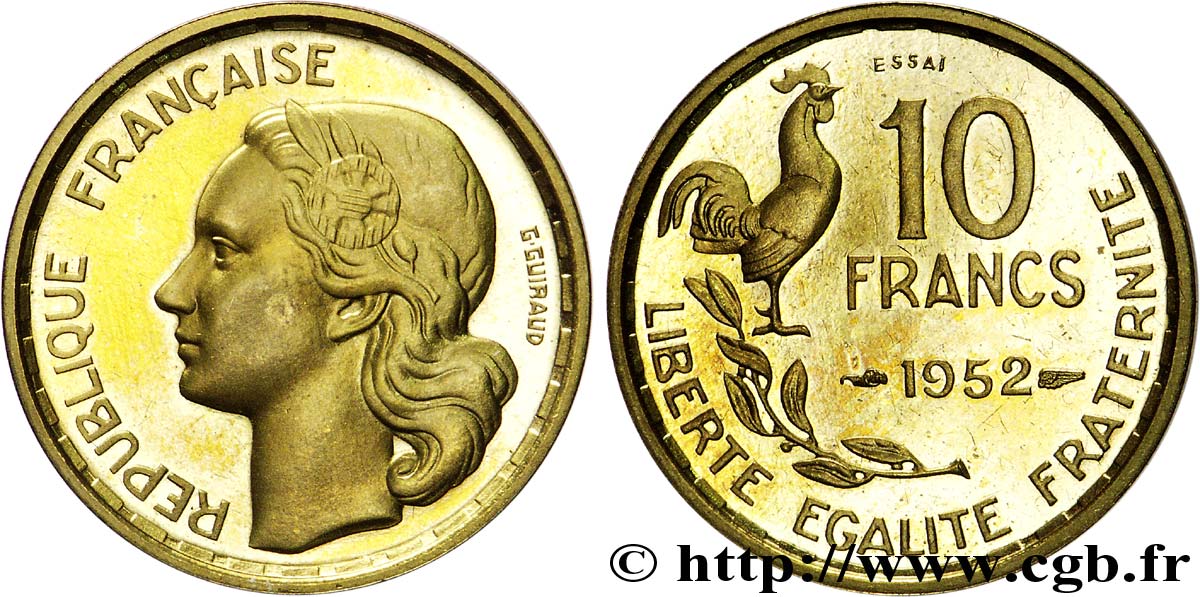v33_1850 - Essai - piéfort au double de 10 francs Guiraud 1952 Paris Maz.2768 a
MONNAIES 33 (2007)
Starting price : 250.00 €
Estimate : 600.00 €
Realised price : 405.00 €
Number of bids : 5
Maximum bid : 689.00 €
Starting price : 250.00 €
Estimate : 600.00 €
Realised price : 405.00 €
Number of bids : 5
Maximum bid : 689.00 €
Type : Essai - piéfort au double de 10 francs Guiraud
Date: 1952
Mint name / Town : Paris
Quantity minted : 104
Metal : bronze-aluminium
Diameter : 20 mm
Orientation dies : 12 h.
Weight : 6,38 g.
Edge : lisse
Rarity : R2
Coments on the condition:
D’infimes hairlines. Parfait avec les reliefs mats sur champs miroir (effet “camée”). Les listels sont coupants sous les doigts
Catalogue references :
Predigree :
Cet exemplaire provient de la collection Bernard Bachelet
Obverse
Obverse legend : REPUBLIQUE - /FRANCAISE.
Obverse description : Tête de Marianne à gauche, coiffée du bonnet phrygien orné d'une cocarde ; signé G. GUIRAUD derrière la tête.
Reverse
Reverse legend : ESSAI // LIBERTE EGALITE FRATERNITE .
Reverse description : 10 / FRANCS / 1952 ; coq debout à droite au-dessus d'une branche d'olivier.
Commentary
Ce piéfort est certainement la plus belle 10 francs Guiraud que nous ayons jamais vue et la parfaite démonstration que l’aspect pâteux des frappes courantes ne tient qu’à une fabrication de qualité médiocre et absolument pas au travail de Guiraud. Il est à se demander, au vu de la qualité technique de ce piéfort, comment ce graveur a pu tolérer ce qui fut fait de son oeuvre pour la circulation courante.
On ne peut que recommander l’acquisition de ce piéfort à ceux qui font les types modernes dans la meilleure qualité possible car cette qualité n’existe certainement pas en frappe courante. Cet essai-piéfort en frappe médaille ne semble pas exister en 1952 sous la forme d’un essai d’épaisseur normale.
On ne peut que recommander l’acquisition de ce piéfort à ceux qui font les types modernes dans la meilleure qualité possible car cette qualité n’existe certainement pas en frappe courante. Cet essai-piéfort en frappe médaille ne semble pas exister en 1952 sous la forme d’un essai d’épaisseur normale.








 Report a mistake
Report a mistake Print the page
Print the page Share my selection
Share my selection Ask a question
Ask a question Consign / sell
Consign / sell
 Full data
Full data



